When you pick up a prescription, you might see a different name on the bottle than what your doctor wrote. That’s not a mistake-it’s a generic drug. And while it looks different, costs less, and has a simpler label, it’s supposed to work exactly like the brand-name version. But how do we know it really does? The answer lies in something called absorption rates-and the strict rules that make sure generics don’t just look similar, but act the same in your body.
What Absorption Rate Actually Means
Absorption rate isn’t about how strong the drug is. It’s about how fast and how much of the medicine gets into your bloodstream. Two things matter most: how much of the drug enters your blood (called AUC, or Area Under the Curve), and how quickly it gets there (called Cmax, or Maximum Concentration). These aren’t theoretical numbers-they’re measured in real people during clinical studies. Healthy volunteers take the brand-name drug, then later take the generic, and scientists track their blood levels over time.
The goal? Make sure the generic delivers nearly the same amount of medicine, at nearly the same speed. If the generic absorbs too slowly, you might not get relief fast enough. If it absorbs too fast, you could get side effects or even toxicity. That’s why regulators don’t just check if the pill contains the right chemical-they check how your body actually uses it.
The 80-125% Rule: Not a Range of Tolerance, But a Tight Standard
You’ve probably heard that generics can be up to 20% weaker or 25% stronger than brand drugs. That’s a myth. The real rule is much tighter. The FDA requires that the 90% confidence interval for the ratio of generic to brand absorption-both for AUC and Cmax-must fall completely between 80% and 125%. That doesn’t mean the average difference can be 25%. It means the entire range of possible differences, based on data from 24 to 36 people, must be squeezed into that window.
Here’s what that looks like in practice: studies of over 2,000 generic drugs show the average difference in absorption between brand and generic is just 3.5%. For AUC, it’s 3.56%. For Cmax, it’s 4.35%. In nearly 98% of cases, the difference was under 10%. That’s not random variation-it’s precision. The 80-125% range exists because even the same person’s body absorbs the same drug slightly differently from one day to the next. The rule accounts for natural biological noise, not manufacturing flaws.
Dissolution Isn’t the Same as Absorption
Some generic pills dissolve slower or faster than the brand version in a lab test. That sounds scary, right? But here’s the catch: dissolution doesn’t always predict absorption. A pill might break down quickly in your stomach but still get absorbed slowly if it’s coated or formulated differently. Or it might dissolve slowly but still get absorbed just as well because your body processes it efficiently.
Studies found that over half of tested generic drugs showed different dissolution rates than their brand counterparts. Generic nifedipine dissolved slower. Generic diclofenac didn’t dissolve enough within 60 minutes. Generic amoxicillin dissolved faster. But when those same drugs were tested in people, their absorption rates still met FDA standards. That’s because the body is not a test tube. What matters is what happens inside you-not in a beaker.
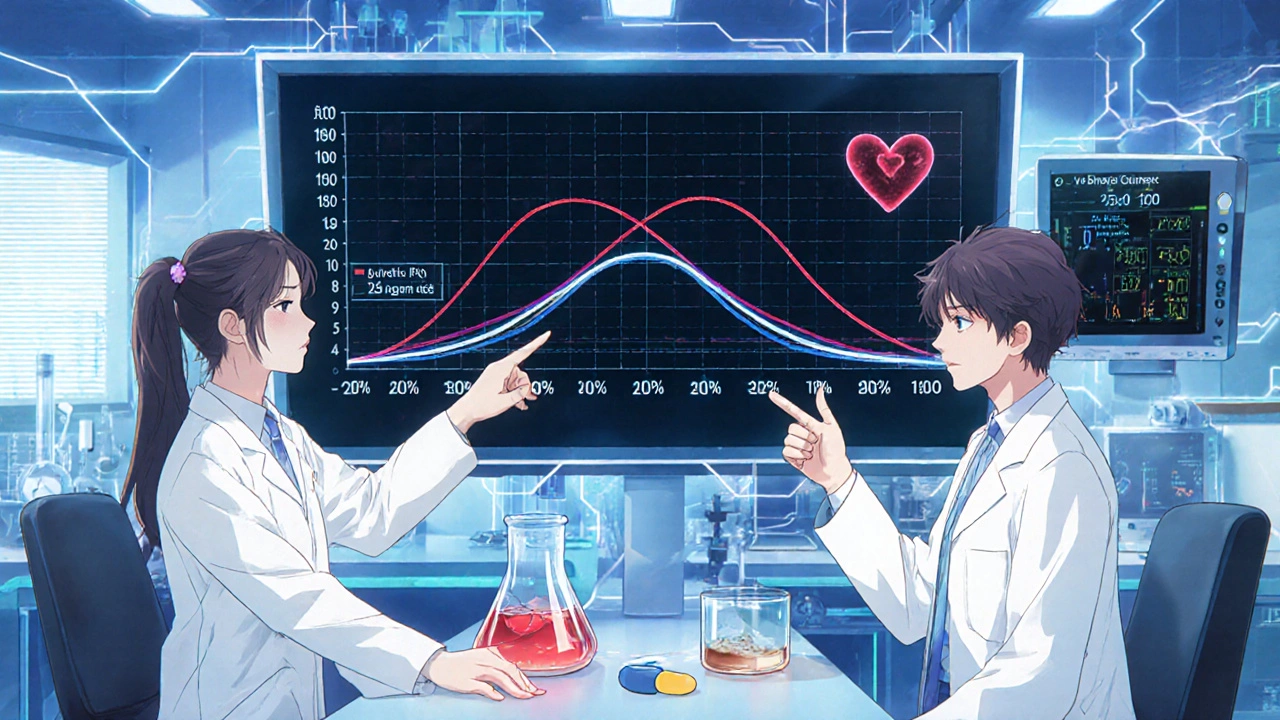
When Generic Drugs Actually Cause Problems
There are exceptions. For drugs with a narrow therapeutic index-where even a small change in blood level can cause harm or make the drug useless-tighter rules apply. For drugs like warfarin, digoxin, and phenytoin, the FDA requires absorption ratios to stay within 90-111%. These are not drugs you want to switch randomly.
Patients on thyroid medication (like levothyroxine) or antidepressants (like bupropion) sometimes report feeling different after switching to a generic. A Drugs.com analysis of 1,247 reviews found 34% of thyroid medication complaints involved generics, and 28% for bupropion. But here’s the key: those are anecdotes. A 2023 meta-analysis of 47 studies with nearly 10,000 patients found no difference in outcomes between brand and generic cardiovascular drugs. The FDA has recorded only 12 cases of possible therapeutic failure out of more than 14,000 approved generics between 2008 and 2023-that’s a 0.08% failure rate.
Often, what patients feel isn’t the drug-it’s the expectation. If you’ve been on a brand drug for years and suddenly get a pill that looks different, you might notice it more. You might blame the generic. But studies show that when patients don’t know which version they’re taking, they report the same results.
What the Orange Book Tells You
The FDA publishes the Orange Book, a public list of all approved drugs and their therapeutic equivalence ratings. An ‘A’ rating means the generic is considered interchangeable with the brand. A ‘B’ rating means there’s a potential issue-usually because the drug hasn’t been tested enough, or there’s a formulation difference that could matter. Most generics carry an ‘A’ rating. In 49 states, pharmacists can swap a brand drug for an ‘A’ rated generic without asking you. Only in rare cases do doctors need to write “dispense as written” to prevent substitution.
If you’re on a narrow therapeutic index drug, ask your pharmacist: Is this generic rated ‘A’? If you’ve been stable on a brand drug for years, switching to a different generic might not be worth the risk-even if it’s technically approved. Your body may have adapted to one specific formulation.
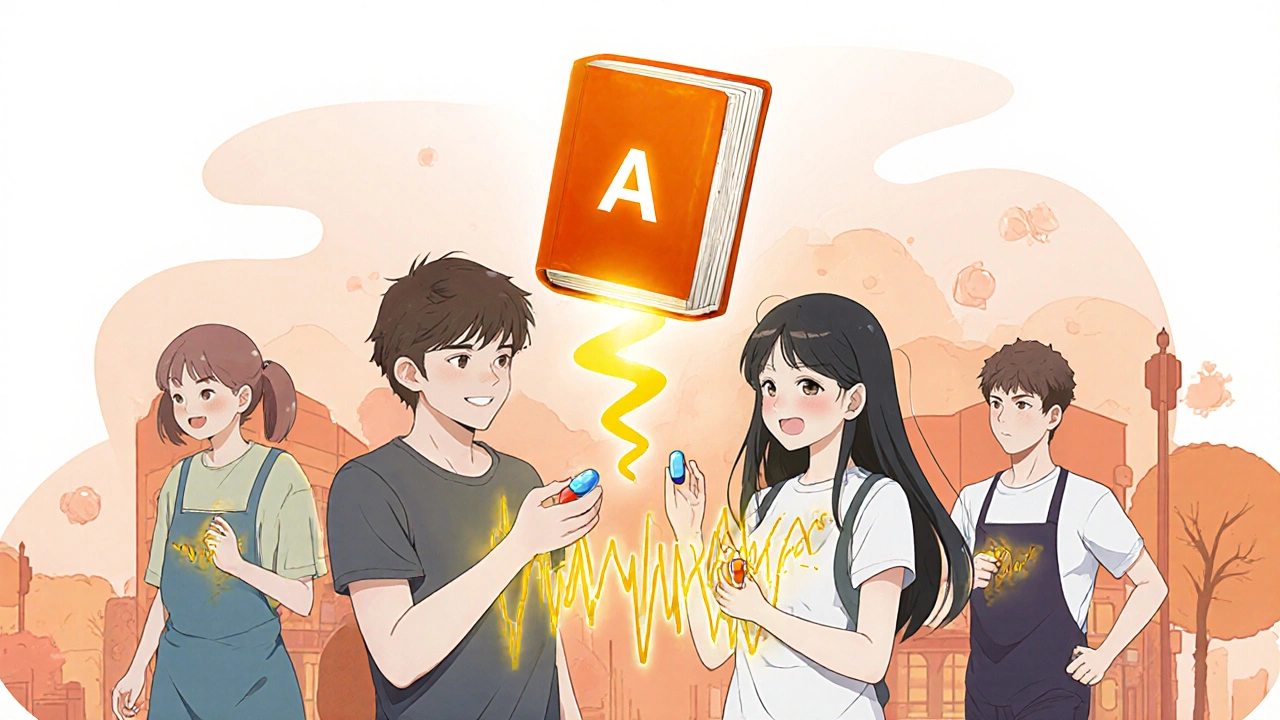
Why Generics Are So Common-and So Cheap
Generics make up 90% of all prescriptions filled in the U.S., but they cost only 23% of what brand drugs do. In 2023, the generic drug market was worth $135.7 billion. That’s because once a brand drug’s patent expires, multiple companies can make the same medicine. They don’t need to repeat expensive clinical trials-they just need to prove absorption rates match. That cuts costs dramatically.
And it works. Patients who switch to generics are far less likely to stop taking their medicine because of cost. The Alliance for Applied Medication found that new patients abandon brand-name prescriptions 266% more often than generics. Over 90% of generic copays are under $20. For people managing chronic conditions like high blood pressure or diabetes, that difference can mean the difference between staying healthy and ending up in the hospital.
What You Should Do
For most people, generics are safe, effective, and the smart choice. If you’re taking a regular medication-antibiotics, statins, blood pressure pills, even antidepressants-there’s no reason to avoid a generic with an ‘A’ rating. Your body won’t know the difference.
But if you’re on a narrow therapeutic index drug-warfarin, lithium, thyroid hormone, seizure meds-stick with the same manufacturer if you can. Don’t switch generics unless your doctor approves it. If you feel different after a switch, tell your provider. It’s rare, but not impossible.
And if you’re worried about the look of your pills? Don’t be. U.S. law requires generics to look different from brand drugs. That’s to avoid trademark violations, not because the medicine is different. A red pill isn’t stronger than a white one. A capsule isn’t slower than a tablet. What matters is the absorption rate-and that’s tightly controlled.
What’s Next for Generic Drugs
The FDA is working on faster, smarter ways to test bioequivalence. Instead of always using human studies, they’re testing computer models that predict how a drug will behave based on its chemistry and formulation. This could speed up approval for complex generics like inhalers and topical creams without lowering standards.
But the core rule-the 80-125% absorption range-won’t change. It’s been proven over decades. It’s backed by science. And it’s why you can trust a $4 generic pill just as much as a $40 brand-name one.

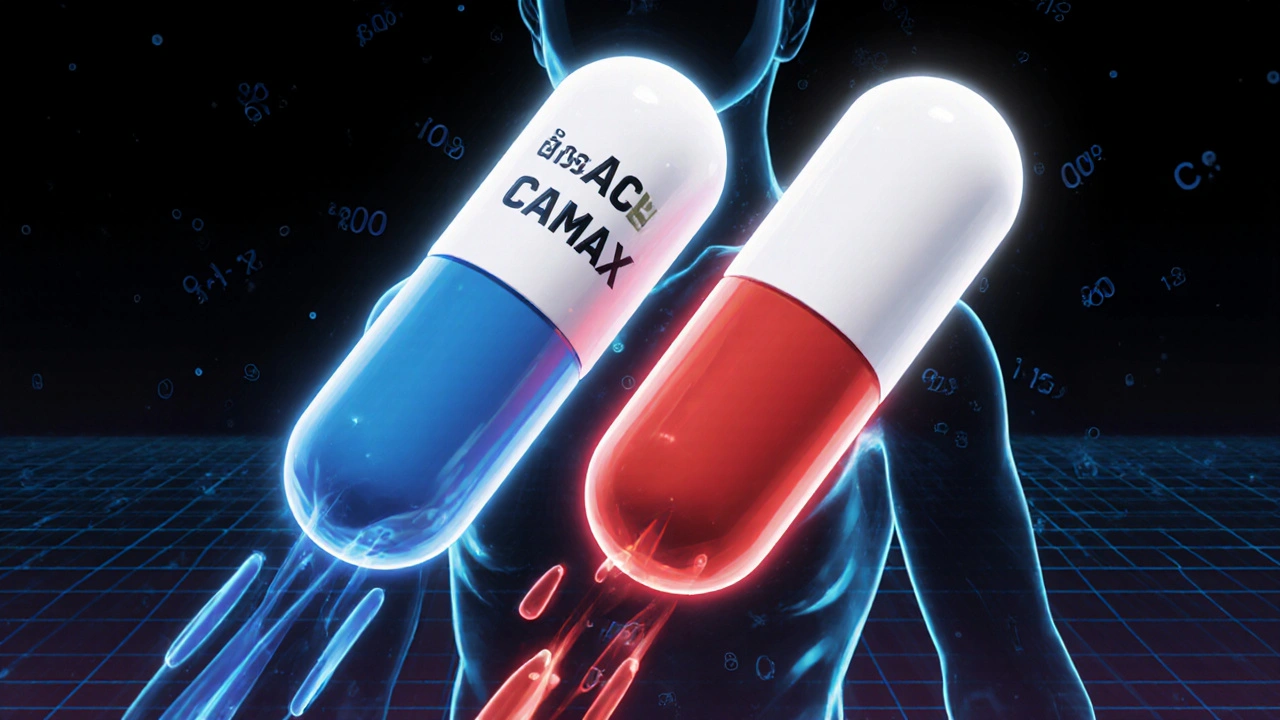

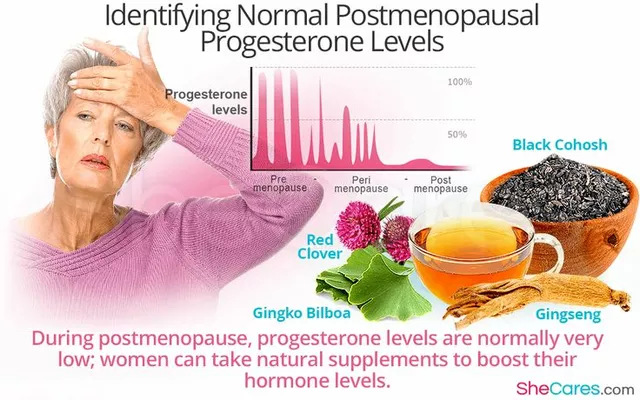
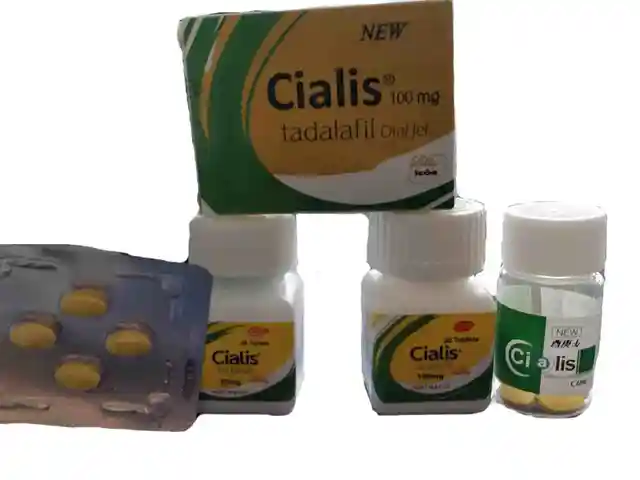

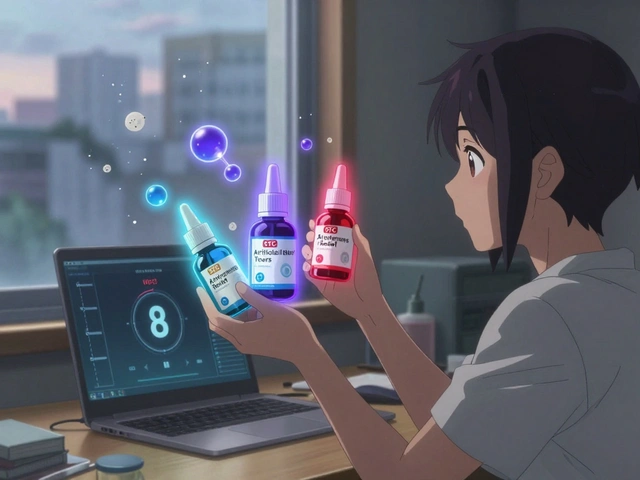
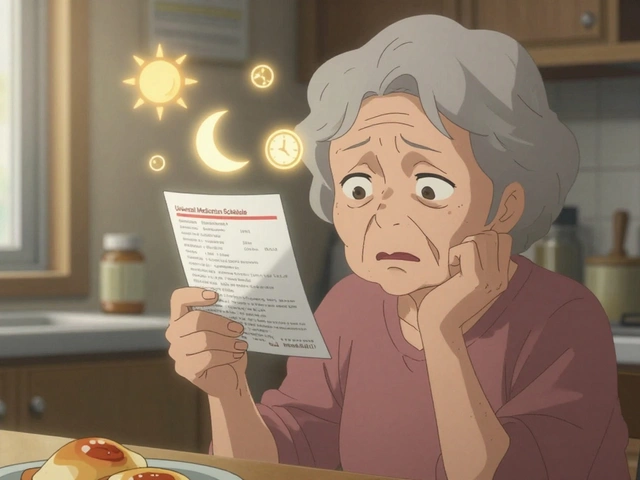

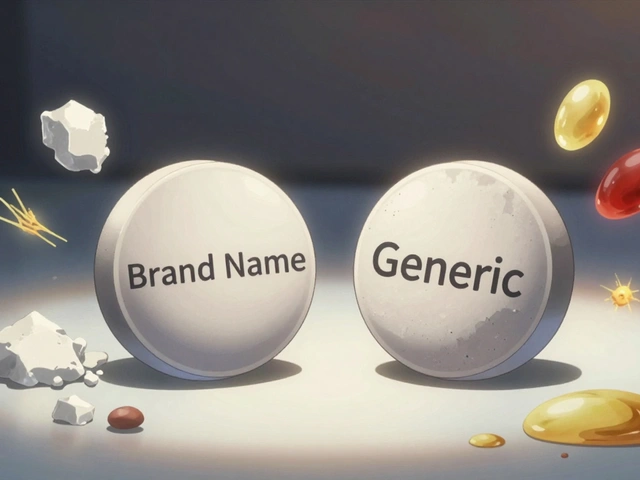


Christopher K
November 20, 2025 AT 07:49 AMSo let me get this straight-we’re supposed to trust a $4 pill that looks like it was designed by a 12-year-old on MS Paint… but it’s just as good as the $40 one? Yeah right. Next they’ll tell me my iPhone charger from Alibaba is just as safe as the Apple one. LOL. Wake up, sheeple.
Christopher Robinson
November 20, 2025 AT 21:34 PMActually, the science here is rock solid 🧪. The 80-125% range isn’t a loophole-it’s a buffer for natural biological variation. I’ve worked in pharma QA, and the testing is insane. Multiple batches, multiple subjects, multiple days. The average difference is like 3-4%. That’s less than your morning coffee affecting your heart rate. Generics are heroes.
James Ó Nuanáin
November 21, 2025 AT 11:48 AMOne must observe, with a degree of academic rigour, that the American regulatory framework for bioequivalence remains the gold standard globally. The 80-125% confidence interval is not arbitrary; it is statistically derived from decades of pharmacokinetic data. To suggest otherwise is to misunderstand both pharmacology and the scientific method. The British MHRA adheres to identical thresholds. This is not American exceptionalism-it is evidence-based medicine.
Kara Binning
November 23, 2025 AT 03:10 AMI switched to generic levothyroxine last year and felt like a zombie for three weeks. My hair fell out. I cried in the shower. My cat noticed. The pharmacist said ‘it’s the same thing.’ SAME THING?! My body knows the difference. And now I pay extra because I refuse to be a lab rat for Big Pharma’s cost-cutting agenda. 🥺
river weiss
November 24, 2025 AT 23:13 PMIt’s important to distinguish between bioequivalence and therapeutic equivalence. While the FDA requires absorption profiles to be statistically equivalent, individual variability-especially in elderly patients or those with GI disorders-can still lead to clinical differences. The data is strong overall, but blanket statements about ‘no difference’ ignore real-world complexity. Always monitor response.
Michael Petesch
November 25, 2025 AT 15:49 PMHow do countries with less stringent regulatory oversight handle generic bioequivalence? I’m curious if the 80-125% standard is universally adopted, or if it’s a Western luxury. In India, for example, many generics are exported globally-do they undergo the same human pharmacokinetic studies?
Ellen Calnan
November 27, 2025 AT 06:54 AMThere’s something deeply human about this. We don’t just want medicine-we want the story behind it. The brand name feels like a promise. The generic feels like a compromise. But science says: it’s the same promise, just without the marketing budget. Maybe the real issue isn’t the pill… it’s our fear of losing control. We’re not afraid of the drug. We’re afraid of being fooled. And honestly? That’s valid.
Sam Reicks
November 27, 2025 AT 07:41 AMthe fda is just a front for big pharma to keep the generics cheap so they can still profit off the brand name version later when the patent expires anyway they let the generics in just enough to look good but then they make sure the real good stuff stays expensive and you think you’re saving money but really you’re just being played the whole thing is a scam and they test the generics on prisoners dont believe the hype
Codie Wagers
November 27, 2025 AT 23:26 PMYou speak of absorption rates as if they are the only measure of therapeutic integrity. But what of excipients? Fillers? Dyes? Allergens? The generic manufacturer is not required to disclose their full formulation. One man’s ‘bioequivalent’ is another man’s anaphylactic nightmare. You assume safety because the numbers match. But your body doesn’t read FDA reports. It reads chemistry. And chemistry is not always kind.
Paige Lund
November 29, 2025 AT 06:04 AMSo… we’re supposed to be impressed that a pill dissolves in the right amount of time? Cool. Can I get a Nobel Prize for this?
Reema Al-Zaheri
November 29, 2025 AT 10:14 AMAs someone from India, where generic manufacturing is a global backbone, I can confirm: the quality control is rigorous. We export to the U.S., EU, and WHO-listed countries. The dissolution tests are not just for show-they’re audited. But yes, some small manufacturers cut corners. That’s why the FDA’s Orange Book exists: to filter out the bad apples. Trust the rating, not the brand.
Joe Durham
November 29, 2025 AT 11:52 AMI’ve been on generic metoprolol for 8 years. Never had an issue. But my mom switched and said she felt dizzy. She went back to brand-she’s fine now. Maybe it’s not the drug. Maybe it’s the anxiety of change. I get it. I’d freak out too if my antidepressant suddenly looked like a gummy bear.
Derron Vanderpoel
December 1, 2025 AT 02:29 AMmy doc switched me to generic and i felt like i was drugged out for a week like my brain was wrapped in cotton and i thought it was depression but it was the pill honestly the color change messed with me like i swear the blue one made me feel sad and the white one made me feel normal i dont even know what im saying anymore
Timothy Reed
December 1, 2025 AT 08:23 AMFor patients on narrow therapeutic index drugs, consistency matters more than cost. If you’re stable on a particular generic, don’t switch-even if another is rated ‘A.’ Your body adapts to the specific excipient profile. This isn’t about brand loyalty. It’s about physiological habituation. Your pharmacist can help you track the manufacturer code on the bottle.
Steve and Charlie Maidment
December 2, 2025 AT 14:34 PMOkay, so you’re telling me that a drug that dissolves slower in a beaker can still be absorbed the same way in a human? That’s like saying a car that doesn’t start in the garage will still run fine on the highway. And you call that science? I’ve been on the same brand of seizure med for 15 years. My neurologist says switch. I say no. Because I’ve seen what happens when the system ‘works.’ People end up in the ER. Not because of the drug. Because of the paperwork. And the trust. And the fact that we treat medicine like a spreadsheet.